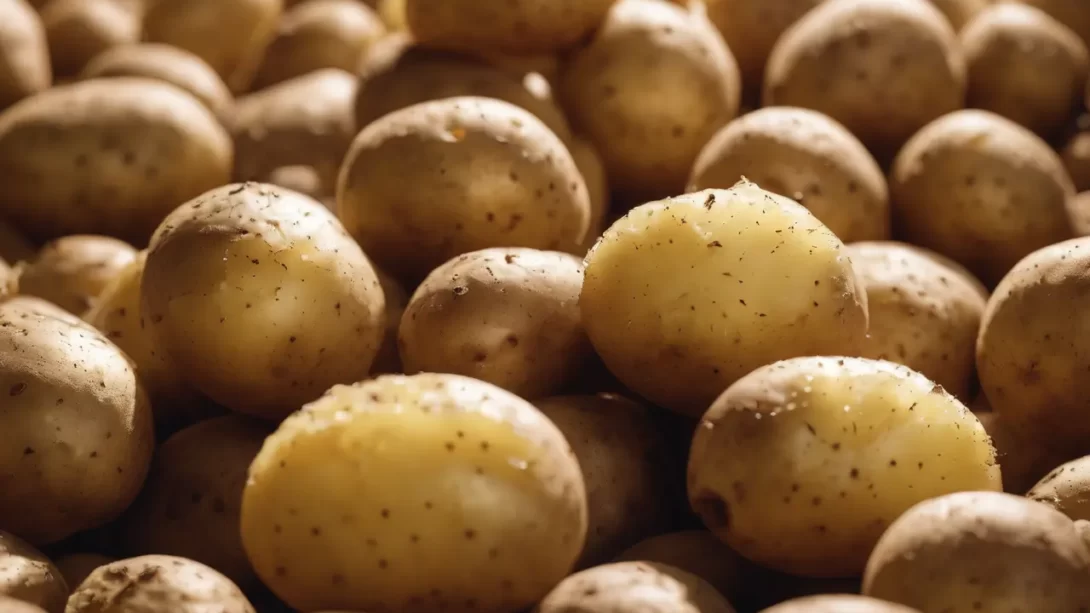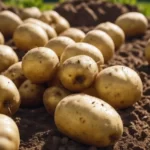Potato cultivation is a fundamental aspect of agriculture and home gardening worldwide. Central to this process is the use of seed potatoes – a method practiced for generations. A common question among gardeners and farmers alike is the number of potatoes one can expect to grow from a single seed potato. This article aims to shed light on the potential yield of potatoes from a single seed potato, considering various influencing factors.
Seed Potatoes
Seed potatoes are not seeds in the conventional sense. Instead, they are small potatoes or pieces of larger potatoes with “eyes” or buds from which new potato plants grow. Unlike typical table potatoes, seed potatoes are specifically cultivated to be free of disease, ensuring a healthy start for the next crop. Preparing and planting these seed potatoes involves cutting them into chunks, each with at least one or two eyes, and then planting them in well-prepared soil. The health and quality of the seed potato are crucial as they directly impact the potential yield.
Factors Affecting Potato Yield
The number of potatoes produced from a single seed potato is influenced by a variety of factors:
- Potato Variety: Different varieties of potatoes have varying yield potentials. Some produce a higher number of tubers, while others may yield larger but fewer potatoes.
- Soil Quality: Fertile, well-drained soil enriched with organic matter can significantly boost potato yield. Soil pH, texture, and nutrient content all play a role in tuber development.
- Climate and Environmental Conditions: Potatoes have specific climate preferences. The right balance of temperature, sunlight, and moisture is essential for optimal growth.
- Care Practices: Regular watering, proper fertilization, pest control, and disease management are vital in maximizing yield. Overcrowding and competition for resources can also affect the number of potatoes produced.
Average Yield from a Single Seed Potato
The yield from a single seed potato can vary widely, but there are general expectations based on the type of potato and growing conditions:
- Yield Range: On average, a healthy seed potato can produce anywhere from 5 to 10 potatoes. In optimal conditions, this number can be higher.
- Variety-Specific Yields: Some potato varieties, like Russets, are known for larger individual tubers, but may produce fewer in number. Conversely, varieties like Fingerlings or Red Potatoes may produce a higher quantity of smaller tubers.
- Anecdotal Evidence: Experienced gardeners and farmers often share their yield results, which can provide insight into what can be expected under different conditions. These accounts can vary based on regional climate, soil type, and potato variety.
Maximizing Yield from Seed Potatoes
To increase the likelihood of a high yield from each seed potato, consider the following best practices:
- Soil Preparation: Ensure the soil is loose, well-drained, and rich in organic matter. Adding compost can improve soil fertility and structure.
- Proper Planting: Plant seed potatoes at the right depth and spacing. Generally, planting them about 3 inches deep and 12 inches apart is recommended.
- Watering and Fertilization: Regular and consistent watering is crucial, especially during tuber formation. Use a balanced fertilizer to provide essential nutrients.
- Hilling: Piling soil around the growing stems, known as hilling, can encourage more tubers to form and protect them from sunlight, which can turn them green and toxic.
- Pest and Disease Control: Monitor for and address any signs of pests or diseases promptly, as these can significantly impact yield.
Common Challenges in Growing Potatoes
Despite best efforts, growers may encounter several challenges when cultivating potatoes from seed potatoes:
- Pest Infestations: Common pests like potato beetles can damage crops. Regular monitoring and using appropriate pest control methods are vital.
- Diseases: Potatoes are susceptible to various diseases, such as blight and scab. Choosing disease-resistant varieties and practicing crop rotation can help mitigate these issues.
- Inadequate Soil Conditions: Poor soil quality, improper pH levels, and inadequate drainage can hinder potato growth. Regular soil testing and amendments can improve growing conditions.
- Inconsistent Watering: Overwatering can lead to rot, while underwatering can stress plants and reduce yield. Maintaining a consistent watering schedule is key.
- Sunlight Exposure: Excessive sunlight can lead to the greening of tubers. Hilling and mulching can protect potatoes from direct sun exposure.
Solutions and Preventative Measures
Addressing these challenges involves a combination of proactive and reactive strategies:
- Integrated Pest Management: Employing a combination of biological, cultural, and chemical control methods can effectively manage pests.
- Disease Prevention: Implementing practices like crop rotation, proper spacing for air circulation, and avoiding overhead watering can reduce disease risk.
- Soil Health Management: Enriching the soil with organic matter and ensuring good drainage will create a more conducive environment for potato growth.
- Consistent Care: Regular checks for watering needs, pest activity, and signs of disease can prevent minor issues from becoming major problems.
Conclusion
Growing potatoes from seed potatoes can be a rewarding endeavor, yielding a bountiful crop under the right conditions. The average yield from a single seed potato varies, influenced by factors such as variety, soil quality, and care practices. Understanding these factors and employing effective cultivation strategies are crucial for maximizing yield and overcoming common growing challenges.
Whether you’re a home gardener or a commercial farmer, the key to successful potato cultivation lies in attention to detail and adapting to the specific needs of your crop. With patience, care, and a bit of agricultural know-how, you can turn a few seed potatoes into a plentiful harvest of this versatile and nutritious vegetable.




